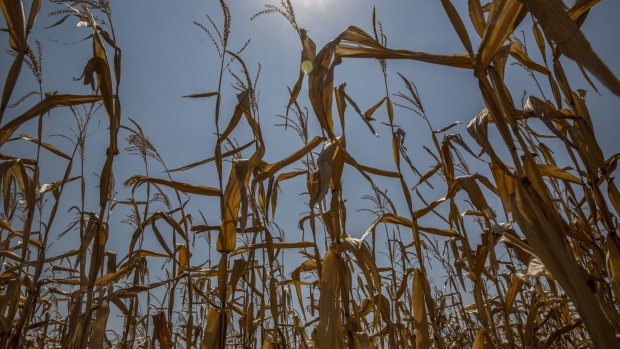Dec 29, 2023
Brazil’s Hot Weather Triggers Early Start to Corn Planting Season
, Bloomberg News

(Bloomberg) -- Brazil’s winter corn planting is off to one of its earliest starts on record, reducing some concerns about the ability of farmers to sow a sizable crop this season.
Hot and dry conditions over the past few weeks sped up the maturing of soybeans in parts of Mato Grosso, allowing some producers to harvest the oilseed sooner than expected and replace it with corn or cotton, according to the top farmer cooperative in the key producing state. This was a surprising turn, given a much-delayed soy planting fueled expectations that many farmers would run out of time to cultivate corn.
“This corn crop will be advanced,” said Leandro Bianchini, a commercial supervisor at Cooperativa Agropecuaria e Industrial Celeiro do Norte, Mato Grosso’s largest farmer cooperative, citing the earlier-than-anticipated soybean harvest.
Brazilian farmers usually plant soybeans in September and October and harvest the crop from January to March. As soon as soybeans are harvested, farmers often plant the so-called safrinha, as the winter corn crop is known, which starts to be collected in May.
The earlier soybean harvest comes despite the region experiencing the latest plantings since the 2015-16 season, according to Mato Grosso’s Rural Economy Institute. About 80% of soybeans had been planted as of early November — considered the ideal sowing window — down from 93% in the same period a year earlier, the institute said.
Still, part of the soybean crop will unlikely be harvested in time to be replaced with corn. And some farmers plan to cut down on planting and reduce fertilizer usage to slash costs following yield losses from their oilseed crops, according to Bianchini. Both would limit the region’s potential winter corn crop harvest.
Brazil is expected to produce 129 million metric tons of corn in 2024, down almost 6% from this year, the US Department of Agriculture said earlier this month.
Brazil overtook the US as the world’s largest corn exporter after a record harvest in 2023, giving the South American nation even greater influence in the global food trade. Another bumper harvest would likely weigh on prices for the commodity, which is headed for a 30% decline this year.
--With assistance from Gerson Freitas Jr..
©2023 Bloomberg L.P.






